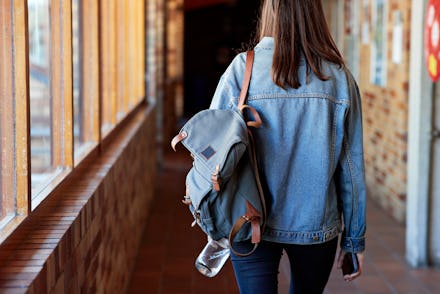Colleges seem extremely unprepared for coronavirus

On Wednesday, the World Health Organization officially declared the ongoing COVID-19 coronavirus outbreak a "pandemic," marking a terrifying new phase of what has become a global crisis. At nearly the exact same time, Axios reported that Congress's in-house doctor had notified Senate staffers that he expected anywhere from 75-150 million Americans to become infected with the virus in the coming days, weeks, and months ahead.
Put together, these two items signal just how bad this viral outbreak has become, and just how much worse it will likely get. And while the federal response has thus far been a particularly Trumpian combination of negligence and malfeasance, there is plenty of blame to go around when it comes to the multiple ways our institutions have failed to adequately address this accelerating crisis.
For instance, take college campuses, and an ongoing wave of closures which have left students classless, homeless, and without any clear direction of what to do next. All told, more than half a million students have been affected as schools scramble to balance public health with the practical needs of those in their charge.
One of those schools is none other than Harvard University, arguably the nation's premier educational institution, which announced on Tuesday that all students were to remain off campus after the start of this weekend's spring break "until further notice," with classes going online-only by March 23. The abruptness of Harvard's announcement was met with shock from students left with little time to prepare for what has essentially amounted to a mass eviction.
"We were all in shock at the short notice,” Anil Bradley, a Harvard sophomore, told CNBC. “I’m lucky enough to have a strong situation where my dad is able to drive up from New York and drive me home, but a lot of my friends who are low-income and rely on the university for housing and dining are having trouble with travel costs and even housing security."
Other students expressed similar frustrations online:
While some administrators at Harvard have worked to direct university funds — part of the school's nearly $40 billion dollar endowment — toward helping displaced students, the effort came only after students themselves were forced to self-organize a crowdsourced network to help accommodate their classmates.
The wave of campus closures has also left some many confused as to how, and why, their schools are choosing to shut down, as each university grapples with the decision in its own way and at its own pace.
And the confusion over being forced to leave campus has led to even more serious conflicts elsewhere.
On Tuesday evening, armored riot police used non-lethal weapons to disperse an estimated crowd of 1,000 students at the University of Dayton, in Ohio, after the school announced that it too would be closing its dorms and forcing students to evacuate for at least two weeks following the end of this week's spring break.
While the student-run newspaper stressed that what occurred was not a protest of the dorm closures, but rather an impromptu party by students ahead of what might be their last time to be together for the semester, the fact remains that schools across the country seem woefully unprepared for the unintended consequences of abrupt closures amidst the coronavirus outbreak.
As this wave of college closings and in-person class cancellations continues, it remains to be seen whether this school year will be able to effectively recover once students "return" (or not) from their spring breaks. What's clear, however, is that the full extent of the coronavirus's disruptive effect on the daily lives of hundreds of thousands of people in the U.S. — many of whom will have no direct exposure to the virus itself — is only beginning to be felt.